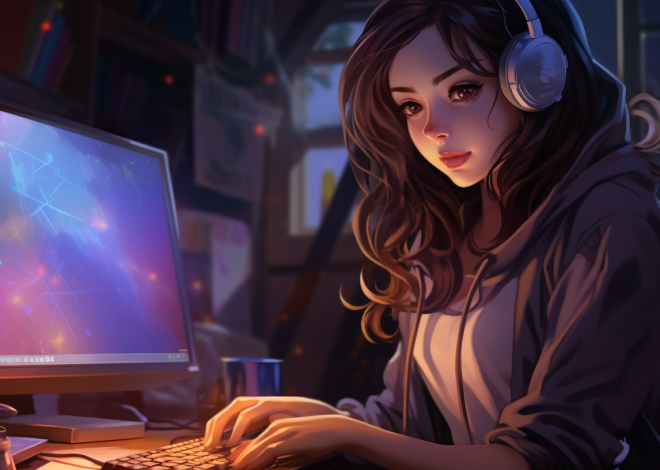
Python for Video Processing and Analysis
If you are a Python developer interested in video processing and analysis, you’ve come to the right place. Python is a powerful language that can be used for a wide range of applications, including video processing and analysis. In this tutorial, we will explore how to use Python and specifically the OpenCV library to process and analyze videos.
What is Video Processing?
Video processing involves manipulating and modifying video data. This can include tasks such as cropping, resizing, rotating, and changing the color of videos. Videos can also be analyzed for various purposes, such as object detection, tracking, and motion estimation.
Introduction to OpenCV
OpenCV is an open-source computer vision library that provides a wide range of tools and functions for video processing and analysis. It can be used with multiple programming languages, including Python.
To get started, you’ll need to install the OpenCV library. You can do this using pip by running the following command:
pip install opencv-python
Reading and Playing Videos
Let’s start by learning how to read and play videos using OpenCV.
import cv2
# Open the video file
video = cv2.VideoCapture('path_to_video_file')
# Check if the video file is opened successfully
if not video.isOpened():
raise Exception('Error opening video file')
# Read the video frame by frame
while video.isOpened():
ret, frame = video.read()
# Check if there is a valid frame
if ret:
# Display the frame in a window named 'Video'
cv2.imshow('Video', frame)
# Wait for the 'q' key to be pressed to stop playing the video
if cv2.waitKey(1) & 0xFF == ord('q'):
break
else:
# Break the loop if there are no more frames
break
# Release the video file and close the window
video.release()
cv2.destroyAllWindows()
In the code above, we first open the video file using the cv2.VideoCapture function. We then check if the video file was opened successfully using the isOpened method. We read the video frame by frame using the read method. If there is a valid frame, we display it in a window named ‘Video’ using the imshow function. The video playback stops when the ‘q’ key is pressed. Finally, we release the video file and close the window.
Modifying Videos
Now let’s learn how to modify videos using OpenCV. We will cover a few common video processing tasks.
Cropping Videos
Cropping involves selecting a region of interest (ROI) in a video and extracting it as a separate video or image sequence.
import cv2
# Open the video file
video = cv2.VideoCapture('path_to_video_file')
# Check if the video file is opened successfully
if not video.isOpened():
raise Exception('Error opening video file')
# Define the dimensions of the cropped video
x, y, width, height = 100, 100, 300, 300
# Create a VideoWriter object to save the cropped video
output = cv2.VideoWriter('path_to_output_video_file', cv2.VideoWriter_fourcc(*'mp4v'), 30.0, (width, height))
# Read the video frame by frame
while video.isOpened():
ret, frame = video.read()
# Check if there is a valid frame
if ret:
# Crop the frame using the defined dimensions
cropped_frame = frame[y:y+height, x:x+width]
# Display the cropped frame in a window named 'Video'
cv2.imshow('Video', cropped_frame)
# Save the cropped frame to the output video file
output.write(cropped_frame)
# Wait for the 'q' key to be pressed to stop cropping the video
if cv2.waitKey(1) & 0xFF == ord('q'):
break
else:
# Break the loop if there are no more frames
break
# Release the video file, the output video file, and close the window
video.release()
output.release()
cv2.destroyAllWindows()
In the code above, we first open the video file and check if it was opened successfully. We define the dimensions of the cropped video by specifying the coordinates of the top-left corner and the width and height. We create a VideoWriter object to save the cropped video. We read the video frame by frame, crop each frame using the defined dimensions, and display the cropped frame in a window named ‘Video’. We also save the cropped frame to the output video file using the write method of the VideoWriter object. The cropping process stops when the ‘q’ key is pressed. Finally, we release the video files and close the window.
Applying Filters to Videos
OpenCV provides various filters that can be applied to videos, such as Gaussian blur, Sobel edge detection, and color transformations.
import cv2
# Open the video file
video = cv2.VideoCapture('path_to_video_file')
# Check if the video file is opened successfully
if not video.isOpened():
raise Exception('Error opening video file')
# Read the video frame by frame
while video.isOpened():
ret, frame = video.read()
# Check if there is a valid frame
if ret:
# Apply Gaussian blur to the frame
blurred_frame = cv2.GaussianBlur(frame, (5, 5), 0)
# Apply Sobel edge detection to the frame
gray_frame = cv2.cvtColor(blurred_frame, cv2.COLOR_BGR2GRAY)
edges_frame = cv2.Sobel(gray_frame, cv2.CV_64F, 1, 1, ksize=3)
# Display the filtered frame in a window named 'Video'
cv2.imshow('Video', edges_frame)
# Wait for the 'q' key to be pressed to stop applying filters to the video
if cv2.waitKey(1) & 0xFF == ord('q'):
break
else:
# Break the loop if there are no more frames
break
# Release the video file and close the window
video.release()
cv2.destroyAllWindows()
In the code above, we first open the video file and check if it was opened successfully. We read the video frame by frame and apply a Gaussian blur filter to each frame using the GaussianBlur function. We then convert the blurred frame to grayscale using the cvtColor function and apply Sobel edge detection using the Sobel function. We display the filtered frame in a window named ‘Video’. The filtering process stops when the ‘q’ key is pressed. Finally, we release the video file and close the window.
Video Analysis
OpenCV provides powerful tools for video analysis, such as object detection and tracking, motion estimation, and optical flow.
Object Detection and Tracking
Object detection and tracking involve identifying and tracking objects within a video.
import cv2
# Load the object detection model
net = cv2.dnn.readNetFromCaffe('path_to_prototxt_file', 'path_to_caffemodel_file')
# Open the video file
video = cv2.VideoCapture('path_to_video_file')
# Check if the video file is opened successfully
if not video.isOpened():
raise Exception('Error opening video file')
# Read the video frame by frame
while video.isOpened():
ret, frame = video.read()
# Check if there is a valid frame
if ret:
# Perform object detection
blob = cv2.dnn.blobFromImage(frame, 1.0, (300, 300), (104.0, 177.0, 123.0))
net.setInput(blob)
detections = net.forward()
# Loop over the detections and draw bounding boxes around the objects
for i in range(detections.shape[2]):
confidence = detections[0, 0, i, 2]
if confidence > 0.5:
box = detections[0, 0, i, 3:7] * np.array([width, height, width, height])
(x1, y1, x2, y2) = box.astype("int")
cv2.rectangle(frame, (x1, y1), (x2, y2), (0, 255, 0), 2)
# Display the frame with bounding boxes in a window named 'Video'
cv2.imshow('Video', frame)
# Wait for the 'q' key to be pressed to stop object detection and tracking
if cv2.waitKey(1) & 0xFF == ord('q'):
break
else:
# Break the loop if there are no more frames
break
# Release the video file and close the window
video.release()
cv2.destroyAllWindows()
In the code above, we first load the object detection model using the readNetFromCaffe function. We then open the video file and check if it was opened successfully. We read the video frame by frame and perform object detection using the blobFromImage function and the forward method of the network. We loop over the detections and draw bounding boxes around the objects using the rectangle function. We display the frame with the bounding boxes in a window named ‘Video’. The object detection and tracking process stops when the ‘q’ key is pressed. Finally, we release the video file and close the window.
Motion Estimation and Optical Flow
Motion estimation and optical flow involve detecting and tracking the movement of objects within a video.
import cv2
# Open the video file
video = cv2.VideoCapture('path_to_video_file')
# Check if the video file is opened successfully
if not video.isOpened():
raise Exception('Error opening video file')
# Read the first frame of the video
ret, prev_frame = video.read()
# Convert the first frame to grayscale
prev_gray = cv2.cvtColor(prev_frame, cv2.COLOR_BGR2GRAY)
# Create a mask for visualization purposes
flow_mask = np.zeros_like(prev_frame)
# Read the video frame by frame
while video.isOpened():
ret, frame = video.read()
# Check if there is a valid frame
if ret:
# Convert the current frame to grayscale
curr_gray = cv2.cvtColor(frame, cv2.COLOR_BGR2GRAY)
# Calculate the dense optical flow between the previous and current frames
flow = cv2.calcOpticalFlowFarneback(prev_gray, curr_gray, None, 0.5, 3, 15, 3, 5, 1.2, 0)
# Convert the optical flow to polar coordinates (magnitude and angle)
magnitude, angle = cv2.cartToPolar(flow[..., 0], flow[..., 1])
# Set the hue of the flow mask based on the angle of the optical flow
flow_mask[..., 0] = angle * 180 / np.pi / 2
# Set the value of the flow mask based on the magnitude of the optical flow
flow_mask[..., 2] = cv2.normalize(magnitude, None, 0, 255, cv2.NORM_MINMAX)
# Convert the flow mask to BGR for visualization purposes
flow_bgr = cv2.cvtColor(flow_mask, cv2.COLOR_HSV2BGR)
# Display the frame with the optical flow visualization in a window named 'Video'
cv2.imshow('Video', flow_bgr)
# Wait for the 'q' key to be pressed to stop motion estimation and optical flow
if cv2.waitKey(1) & 0xFF == ord('q'):
break
# Update the previous frame and grayscale image
prev_frame = frame
prev_gray = curr_gray
else:
# Break the loop if there are no more frames
break
# Release the video file and close the window
video.release()
cv2.destroyAllWindows()
In the code above, we first open the video file and check if it was opened successfully. We read the first frame of the video and convert it to grayscale. We create a mask for visualization purposes and initialize it with zeros. We then read the video frame by frame and convert each frame to grayscale. We calculate the dense optical flow between the previous and current frames using the calcOpticalFlowFarneback function. We convert the optical flow to polar coordinates (magnitude and angle) using the cartToPolar function. We set the hue of the flow mask based on the angle of the optical flow and the value based on the magnitude. We convert the flow mask to BGR for visualization purposes using the cvtColor function. We display the frame with the optical flow visualization in a window named ‘Video’. The motion estimation and optical flow process stops when the ‘q’ key is pressed. Finally, we release the video file and close the window.
In this tutorial, we have explored how to use Python and the OpenCV library to process and analyze videos. We have learned how to read and play videos, modify videos by cropping and applying filters, and analyze videos by performing object detection and tracking, motion estimation, and optical flow. Video processing and analysis are important tasks in computer vision and Python with OpenCV provides a powerful and flexible platform for performing these tasks.
Have fun exploring the world of video processing and analysis with Python!



Great tutorial on using Python and OpenCV for video processing and analysis. I would also like to add that for those who are interested in working with real-time video streams, OpenCV provides the VideoCapture function that can be used to capture video from a camera or a video file in real-time. Additionally, for more advanced applications, one can explore the use of machine learning and deep learning techniques for more accurate object detection and tracking. These can be integrated with OpenCV to create powerful computer vision applications.